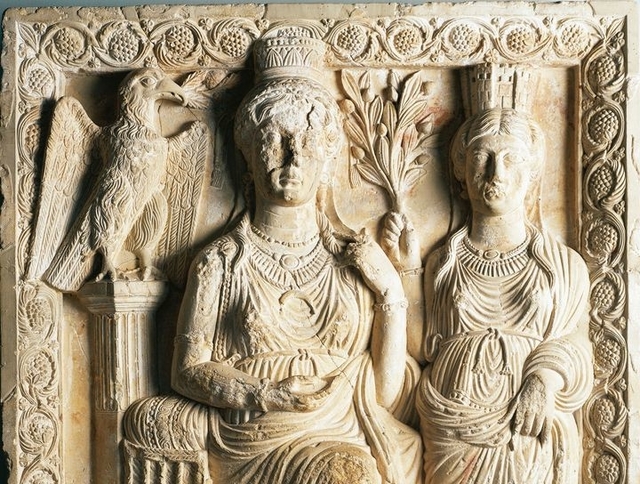
| HAWK AND RA SYMBOL 15. Hawk and RA Symbol :
The Sumerians used Eagle, Hawk and RA which is similar to Trident symbol to represent Sun. The word SHA and RA means Solar Title and in Gujarat, India Kings were also called RA which means that they represented the Sumerian Sun Worshipper lineage.
According to Lieutenant Colonel Laurence Austine Waddell :
The Makers of Civilization in Race and History :
Note : Here, phonetic value PA represents Sun-Hawk.
Decipherment of Sargon's inscription at Abydos :
In the deciphennent of this Sumerian inscription of "Sargon,"
in order to enable the reader to follow it, I have in the accompanying
Deciphennent Table in Fig. 28, arranged in the first line the signs
in their usual orthographic Sumerian order for reading from left
to right; and in the second line are placed for comparison the corresponding
forms of these signs in the standard Early Sumerian script of Mesopotamia,
in which it will be noticed the signs are given a slightly more
cursive and somewhat abbreviated form for rapid writing; in the
third line are placed the Sumerian phonetic values of each sign
in roman type, each duly attested for the standard Sumerian lexicons;
and in the fourth line is the literal translation all duly attested
for each word by the references in the preceding line. The language
is Sumerian.
Transl.
: The Shepherd of the (Sun-)Hawk, of the House of the Pharaoh
KAD (the lofty) GIN, the Ukus (or Ukussi) FIG.
28. : Sargon's Tomb Inscription as the Solar KAD, GIN or
SHA-GIN, the UKUSSI at Abydos deciphered (1. This Sha sign means "protect", "protector", also "shepherd" and shining, "Br. 2560, 2572, 2577. It is clearly not the read sign with the meaning of "King" from which it differs by its curve below.)
The Sha' prefix to his solar title is in series with his name and title spelt Sha-Gin in the Old Sumerian King-Lists (see Table facing p. 140) and in series with his fuller Indian form of name as Sha-Kuni. The sign for his solar title "KAD" is the pictogram of an uplifted hand with the fingers erect.
In
its conventionalized Egyptian Hieroglyph form this sign is pictured
by two uplifted hands conjoined and is given the phonetic value
of Ka, whence Egyptologists have called the solar title of this
king "King Ka". This Ka value in Egypt is obviously derived
from the Sumerian value of this sign as Kad or Kat, wherein the
final d, as is often the case, has dropped out; and affords another
illustration of the derivation of the Egyptian hieroglyphs from
the Sumerian in pictographic form and phonetic sound. This title
Kad is used by Sargon also in his beautiful Bull signet (PI. X,
No. r) from the Indus Valley. And Kad as we have seen was a not
infrequent title used by the Phoenicians, and we have seen that
Sargon was an Aryan Phoenician.
In
such circumstances, if Sargon's body were really buried in this
tomb, which was the tomb of his queen (the mother of Menes), who
obviously died before him, his body must have been embalmed for
its transport from Mesopotamia to Abydos to repose beside that of
his queen.
Sargon's Queen's tomb inscription at Abydos deciphered :
The inscription on Sargon's Queen's tomb vase (Fig. 27) is likewise written in the reversed direction or towards the left, and in the Sumerian langnage. When arranged for decipherment in the usual Sumerian order of reading from left to right it reads as follows :
FIG.
29 : Sargon's Queen, the Lady Ash (Ash-Nini), Tomb inscription at
Abydos deciphered
The name of Sargon's Queen here as "The Lady Ash" is of immense critical importance. In later Babylonian records the name of Sargon's Queen is given as Ash-nar(-tum) or Ash-lul(-tum)-tum meaning "the exalted," and l and r are freely interchanged dialectically. And in the Indian Epics her name as the mother of Manasyu, i.e., Menes, is given as Acchura(-Seni) (see p. 233).
Thus
both Babylonian and Indian substantially agree with the Abydos inscription,
and confirm her identity as the Queen of "Sargon" or King
Gin.
Transl.:
Unto the enthroned one of the Hawk-line of Gin hasten !
Unto the fallen one of the Westem Land, the fallen one hasten, O Min (to) Life ! FIG.
62 : Line 2, column 2, of Dudu's Ebony Label deciphered.
(1. B. 287; Br. 636
5. 2. B. 229. 3. B. 490. 4. B. 158. "Unto."
5.
On this title as Tianu, etc., see before. The two strokes which
double this Lion-head or Pirig sign are seen in front of its head.
Compare these doubling strokes with those in Menes' ebony label
and in the label from "King Zet's" tomb in PRT. I, PI.
XI, in which last the doubling two strokes are placed inside the
neck of the Lion. On the location of this land as Asia Minor, also
the Western Lands generally, including Europe as Greater Amorite
Land, see before.
6. B. 193. The fail sign.)
Note : See the RA sign similar to Trident
A carving of Queen Zenobia at a museum in Damascus, Syria Here, we can see Eagle which represents Sun in the statue of Queen Zenobia of Syria. |



